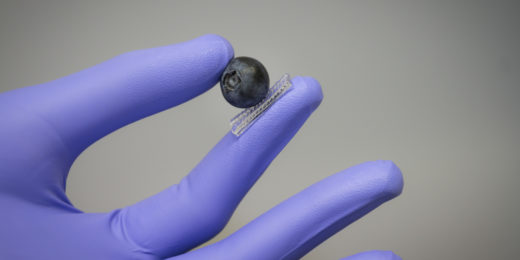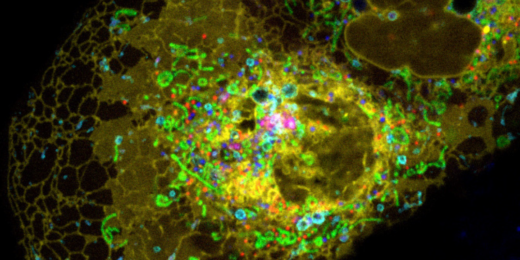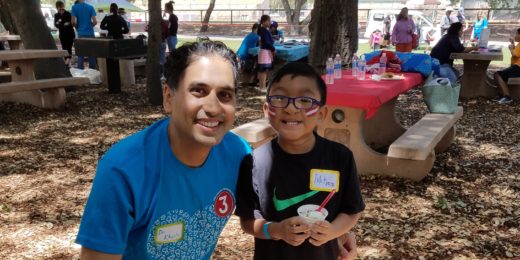DNA looping, or folding, directs a cell's developmental fate. Harnessing this 'DNA origami' could help researchers generate specific tissues for therapies.
Popular
Reflections on the California fires
Second-year medical student Orly Farber reflects on the wildfires that have burned through Northern and Southern California this month.
Sensors could provide dexterity to robots, with potential surgical applications
Stanford researchers have develop an electronic glove that allows a robotic hand to dexterously handle delicate objects like blueberries or ping-pong balls.
NIH should fund the edgy science that may fail — or lead to the next great discovery, researchers say
A new analysis found that the National Institutes of Health is funding more conservative research projects, which does not promote great new discoveries, the authors argue.
WELL challenges you to be mindful during the holidays
Stanford's WELL for Life initiative is challenging you to practice the art of mindfulness for one week to promote self-care.
Innovating to help newborns breathe
Former fellows with the Stanford Byers Center for Biodesign developed a resuscitation device to help clinicians in lower-income countries save newborns.
Registration now open for Stanford’s Big Data in Precision Health conference
The seventh annual Big Data in Precision Health conference will be held May 22 and 23 on the Stanford campus; registration is now open.
More genetic testing needed for ovarian cancer patients, new research suggests
The prevalence of genetic testing in the United States falls short of the recommended guidelines for women with ovarian cancer, new research indicates.
All the proteins on the job: A faster, more accurate way to examine the proteome
A team of Stanford researchers has developed a new model to more accurately identify proteins from a mass spectometry sample.
Learning the risk of genetic disease through Humanwide
A patient worried that cancer may run in her family finds answers through genetic testing offering by Stanford Medicine's Humanwide project.
Avoiding health surprises through Humanwide
After receiving a donated kidney from his father, a patient strives to stay healthy by monitoring key data with a Stanford Medicine Humanwide team.
Muting an inflammatory loudspeaker on immune cells shrinks acute stroke damage
Selectively subduing a set of cells that migrate to the brain after a stroke occurs could meaningfully treat the stroke even days later.
Stanford team induces mice to see specific things that aren’t there
The real question a new study suggests, isn't why some people occasionally experience hallucinations: It's why all of us aren't hallucinating all the time.
Helping young cleft palate patient feel like a star
10-year-old Mathias Dizon fulfilled a promise to sing the national anthem at the Stanford Children’s Health Cleft and Craniofacial Center's annual patient and family picnic.
Celebrating 10,000 posts!
Launched in 2009, Scope has published 10,000 posts. A celebration featuring narrative writing — kicking off with a piece from Abraham Verghese — is planned.
Looking beyond drug treatments for parasitic disease
A Stanford study investigates the barriers to controlling parasitic disease and possible interventions beyond mass drug and education campaigns.

















